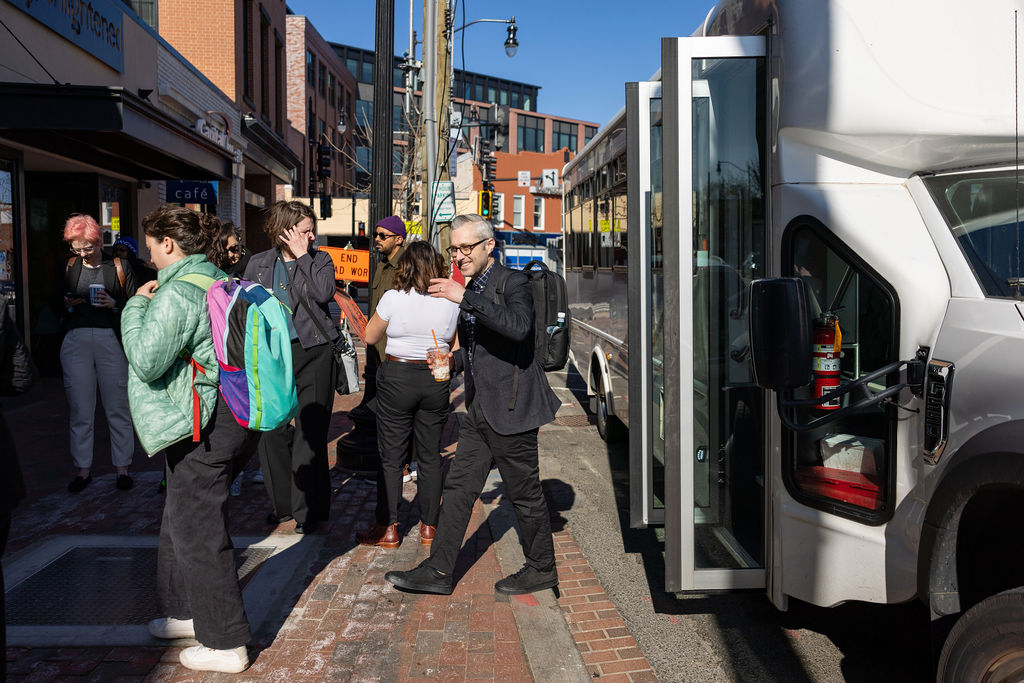
Oregon’s legislature just approved a transportation package that goes big for transit

The Oregon Legislature just passed a transportation package that makes historic investments in transit while also advancing congestion pricing and putting funding toward safe routes to school infrastructure, electric vehicle purchase incentives and fixing roads and bridges.
As local stakeholders, the governor, and legislators worked over the last year and a half to develop legislation to invest in Oregon’s transportation system, a common refrain emerged: “Go big, or go home!” The idea being that if legislators were going to take a tough vote to increase taxes, they might was well make it a significant enough increase to make a substantial difference for the state’s commuters, traveling public and shippers. The Oregon House passed HB 2017 yesterday (Wednesday), and the Senate approved the legislation late today, which the governor is expected to sign. If Governor Kate Brown signs the bill, Oregon will become the sixth state to raise new transportation funds in 2017, and the 30th since 2012.
Oregon puts some skin in the transit operations game
Now virtually at the finish line, the overall package isn’t as big as initially proposed, but it has gone big for transit. The legislation introduces a new statewide transit-dedicated 0.1% employee payroll tax expected to generate $103 million annually. This represents over a 200 percent increase in state funding for transit — truly a game-changer that will increase transit service in rural and urban areas across the state.
Change from 2014 state funding per capita for transit, compared to potential funding with new transit funding. Via bettertransitoregon.org
A committee created by the legislative leadership to develop the initial funding package toured the state last year and heard about the importance of transit from every community they visited, large and small, rural and urban. However, like many other states, Oregon has a very strict constitutional restriction on motor-vehicle user-fees like gas taxes, registration fees and title fees. Funds from these sources can only go to infrastructure within the road right-of-way, and definitely not to transit operations.
This wasn’t Oregon’s first recent attempt to raise new funds for transportation. An employee payroll tax to fund transit had originally been proposed in the failed 2015 “Gang-of-8” package. While there were concerns about the regressiveness of this funding source, and a more progressive income tax was floated as an alternative, ultimately, the payroll tax stuck. To mitigate the regressive payroll tax, transit agencies will be required to submit public transportation improvement plans explaining how they will improve service and/or reduce fares for low-income riders.
As part of the effort to win this component of the package, the Oregon Transit Association compiled stories about the value of transit and how additional funding could effectively be spent to improve the lives of Oregonians. The Better Transit Oregon website outlines, for example, improvements like seven new bus lines and increased service on 20 other transit lines in the Portland region, and enhancing service that Kayak Public Transit provides between Pendleton, Hermiston, La Grande and Walla Walla in eastern Oregon. Overall, the funding could provide a 37 percent increase in service hours statewide.
Many ways to skin a cat
The joint legislative committee tasked with producing the package recognized from the start that this package had to be multimodal. While there was a focus on freeway projects that would address three bottlenecks in the Portland region, many committee members quickly recognized that these freeway projects were certainly not silver bullets and possibly wouldn’t help much at all in the long term.
Senator Brian Boquist from a rural part of the Willamette Valley regularly told his colleagues and the media that, “We cannot build our way out of congestion,” and “We cannot tax our way out of congestion,” to advance tolling and congestion pricing as critical strategies to address Oregon’s congestion challenges. The legislation directs ODOT to study, and, if feasible, implement congestion pricing on the two major north-south freeways in the Portland region, I-5 and I-205.
Ironically, as the size of the package shrank due to pressure from trucking and automotive stakeholders, the funding available for the freeway projects shrank, but congestion pricing stayed in the bill along with smaller investments like $10-15 million annually for safe routes to school infrastructure, a $12 million annual program for electric vehicle purchase incentives and the aforementioned transit funding. Overall the package shrank from $8 billion over 10 years to $5.3 billion.
Recognizing the need for accountability and transparency – but coming up short
Legislators recognized the need for improved transparency and accountability but lacked the political will to fully address the issue in any meaningful way.
While the Oregon Department of Transportation (ODOT) is known for its emphasis on state of repair, and certain data-driven programs like All Roads Transportation Safety and Connect Oregon, it has stumbled significantly, particularly with more expensive projects like the failed Columbia River Crossing and the over-budget Pioneer Mountain Eddyville highway project.
A working group was specifically charged with developing policies to address accountability and transparency. T4A had worked with Representative Reardon to put forward HB 2532 modeled on Virginia’s “Smart Scale” concept as way to identify projects that maximize return on investment. It proposed to do this by giving each project a return-on-investment (ROI) score and only selecting for funding those that scored the best. In the end, the workgroup opted for “the Nevada model” which involves cost-benefit analysis of projects, a different tool aimed at the same task of evaluating project ROI.
Unfortunately, the committee didn’t make a strong commitment to this new approach, exempting all the earmarked projects in the bill, and only including modernization projects that cost more than $15 million. To put this in perspective, the draft 2018-22 State Transportation Improvement Plan (STIP) includes no projects that that clearly would be subject to the new analysis.
This means Oregon won’t be able to use this system to meaningfully compare proposed projects — including nearly $800 million in earmarks in the package — to report on, let alone prioritize, those that maximize return on investment. To make matters worse, the Connect Oregon program — renowned for its data-driven merit-based project selection process similar to the federal TIGER program — is now completely consumed by earmarks for the next two biennia.
The bill does give the governor-appointed and legislatively-confirmed members of the Oregon Transportation Commission (OTC) greater capacity and authority to oversee ODOT. OTC will be granted independent staff and the power to hire and fire the ODOT director in consultation with the governor. These changes create the some hope for administrative change to improve ODOT’s accountability, transparency and ability to make data-driven decisions that maximize return on investment toward achieving Oregon’s goals.





